We were slightly apprehensive at the prospect of a trip to the favelas in Rio. We wanted to check out another side of the city but in our minds the favelas were a no go zone for tourists, our perception fuelled by news reports detailing drug wars, gun fights and unpoliced towns.
We were intrigued and, after a bit of deliberation, decided that we would be fine. Our reasoning being they probably wouldn’t offer tours if this was not the case! Blind faith is probably a better description but at that point the tour was booked and we were off to visit the favela Santa Marta in Rio’s South Zone.
Santa Marta Favela
As our car approached the top of the mountain where Santa Marta is located we passed through a police checkpoint to enter the favela. It was amazing to consider that 10 years ago it would have been unthinkable to visit Santa Marta yet here we were ready to take a walk through the community.
Santa Marta was the first favela to undergo a pacification program where control of the favela is passed to the police who then set up a permanent presence in the favela in an effort to remove drug gangs and reduce crime while implementing social change projects.
Having been blessed with endless blue skies and sunny days since we arrived in Rio, our favela tour took place on a drizzly and foggy morning and visibility was limited early on. Somehow it seemed fitting to witness normal Rio life with a bit of realistic Irish weather!
The favela was a maze of stacked houses and narrow alleys tumbling down the steep Rio hillside.
As the weather cleared we were able to see the sprawling favela in its entirety. There’s a huge contrast between the towering skyscrapers further down the hill and the stacked wooden and brick houses of the favela. The massively unequal distribution of wealth is startling to witness.
As we made our way down through the favela I was blown away by what we saw. Santa Marta is colourful and vibrant and the sense of community is incredible. Kids played happily on the street, the soccer skills were phenomenal and upbeat music was being played around every corner. Everyone knew each other and seemed mostly welcoming of our small tour through their favela.
We passed by crèches, supermarkets, bakeries and bars inside the favela. There’s even a samba school and a few football pitches.
The local supermarket:
Too early for drinks, the bar was shut!
Favela street art:
Santa Marta is held up as the model favela and it was interesting to see modern housing elements such as satellite dishes, sewage tanks and electricity wires. As a result of the pacification a new road and tram line were installed to make the trip to the top easier for residents.
That’s not to say that Santa Marta is not without its infrastructure problems. There are many parts where the terrain is uneven and muddy and it must be difficult for the older residents to navigate. Some of the alleys are crammed full of rubbish and sewage and the tram is frequently out of action. But the improvements are there to see and the inside of the houses are much more modern and comfortable than the exteriors suggest.
Michael Jackson
I definitely wasn’t expecting to find a Michael Jackson tribute in the corner of a favela in Rio but there it was!
It turns out that Michael Jackson filmed part of the video to ‘They Don’t Care about us’ in the Santa Marta favela in 1996. Initially the government didn’t want the music video to be filmed in the favela as it was not an image of Rio they wanted to present to the world. They relented and it’s still a huge part of the favela’s culture today.
A bronze statue of Michael Jackson, arms outstretched, commands prime position overlooking the Santa Marta favela and the city of Rio below.
Behind the bronze statue a giant Michael Jackson mosaic adorns the wall:
A little gift shop in the courtyard plays the video on loop for the tourists and sells some memorabilia and local arts and crafts.
Getting into the spirit of things!
The Views
The Santa Marta favela is located high above Rio and the views over the city are spectacular. Ipanema and Leblon are visible in the distance and the infamous Christ the Redeemer Statue stands arms outstretched keeping a watchful eye over the favela atop the Corcovado Mountain.
The Favela Painting Project
As we reached the bottom of the favela we were met with a sea of houses painted in a stunning rainbow of colours. As part of a project to boost community pride, 34 houses were painted in bright greens, yellows and pinks. Two Dutch artists were the driving force behind the project and local youths were employed to complete the project. It’s such a simple yet effective way to boost the image of the favelas and a really positive and cheerful end to the tour.
Safety
We felt very safe at all times and the police presence was noticeable with checkpoints when we entered and left the favela. The residents were friendly and seemed to welcome our tour through their town. Tourists were easily identified with a tell-tale camera but everyone seemed relaxed and comfortable. We were respectful of people’s property and the fact we were in their community and were careful not to take any pictures of the locals or the children to avoid causing any offence.
There is a definite edge of tension in some parts of the favela and new faces were looked upon with a little distrust. I’m not sure I would be comfortable wandering through these parts of Santa Marta without the accompaniment of a guide. The favela is a steep maze of narrow alleyways down the hill and I’d imagine it is pretty easy to take a wrong turn and end up very lost.
Navigating through the favela:
Poverty Tourism
One issue we struggled with was the concept of poverty tourism, where wealthy tourists pay to take tours in poor areas, basically a form of voyeurism. I’m not sure this concept is even relevant any longer in a community like Santa Mara. Far from being a crime ridden and miserable favela it’s amazing to witness the spirit and vibrancy of the community and there are many who live there by choice rather than move somewhere considered more prosperous. We viewed the tour as an opportunity to understand another part of Rio and experience the culture of the city.
One thing we do feel strongly about is the importance to seek out a tour run by local residents rather than large corporations in the belief that this benefits the local community directly. The Brazilian government launched Rio Top Tour, a scheme to teach locals English and encourage them to become guides and some of the Santa Marta tours are run by trained guides from this scheme. As well as being a part of the local community the local tour guides are unlikely to gloss over the realities of life in the favela.
Overall
Visiting the favela was an incredible experience. The favelas are such an integral part of Rio de Janeiro and it was amazing to experience the rich culture and strong sense of community. Everything is so vibrant: the colours, the music and the children playing. The Santa Marta favela is not a place of misery and despair. Housing is basic by Western standards but the pacification has helped build a stronger infrastructure. There are problems. The biggest seems to be waste disposal, understandably difficult at the top of a steep mountain. It’s not perfect, but then where is?
If you love travel and adventures remember to follow us on Facebook and Twitter. If you found the post useful please do share!
Santa Marta Favela Tour
Over one million Rio de Janeiro residents live in the hundreds of favelas across the city and Santa Marta is home to over 5,000 people. Organised tours are available through local tour groups and it is encouraged to find a tour that benefits the local community directly. Thiago Firmino is a local resident offering tours of Santa Marta in both Portuguese and English.
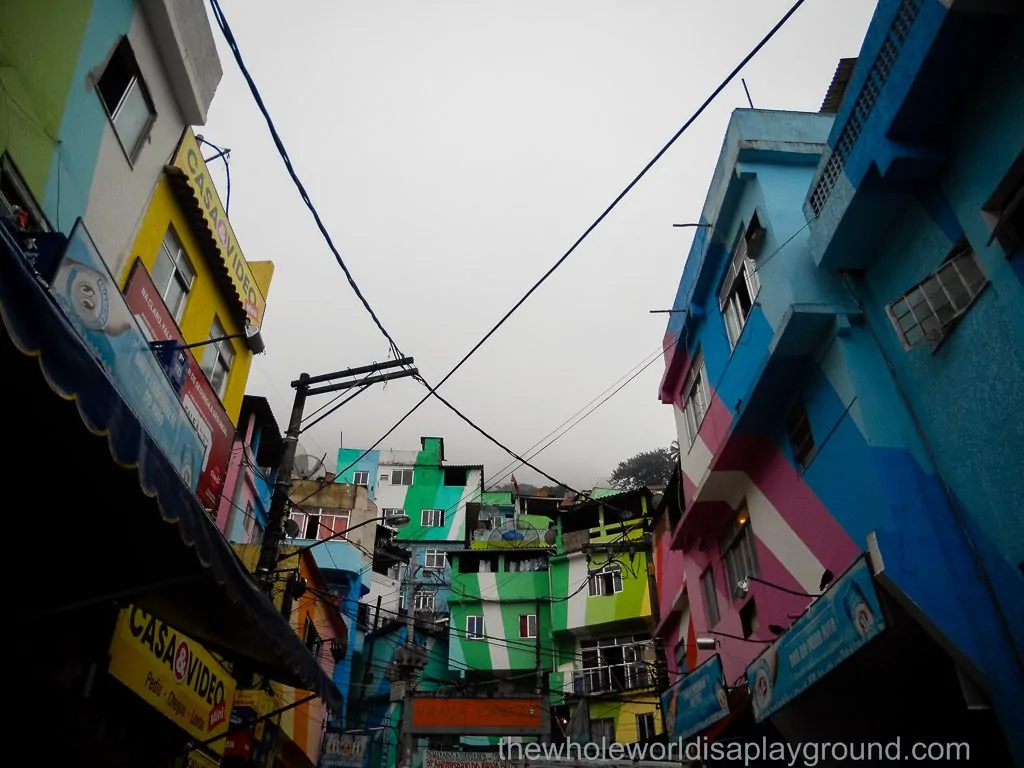
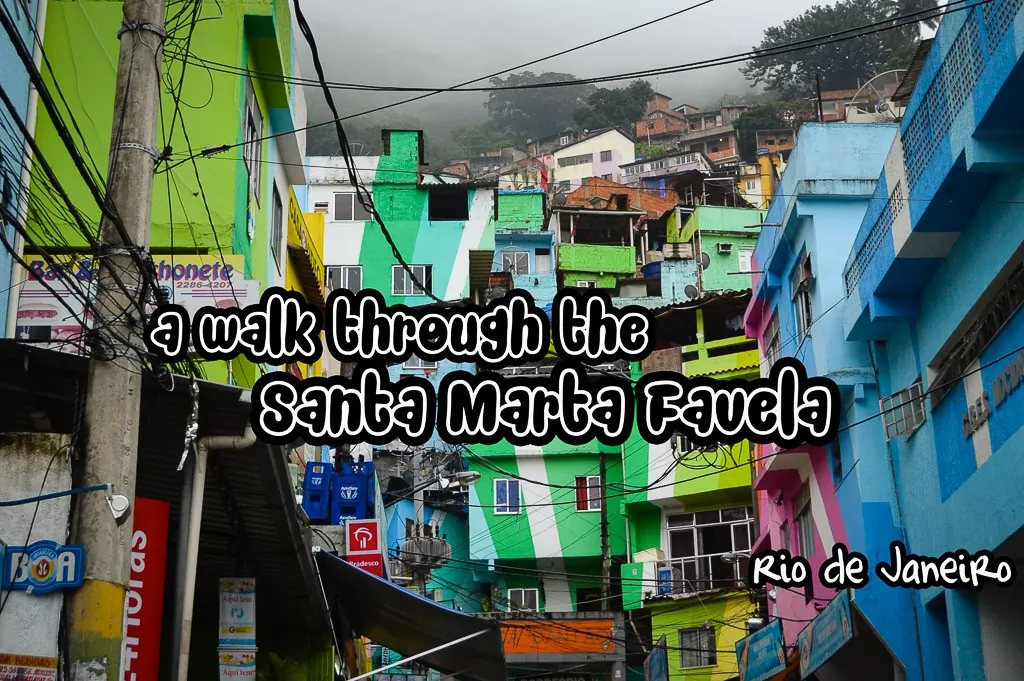
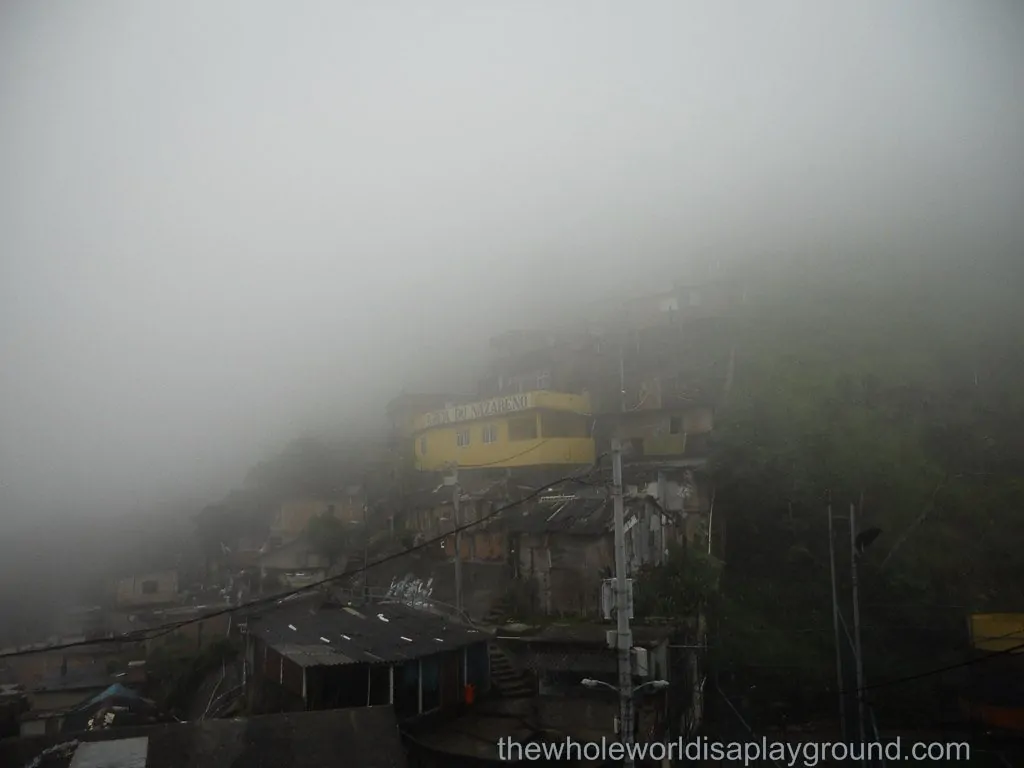
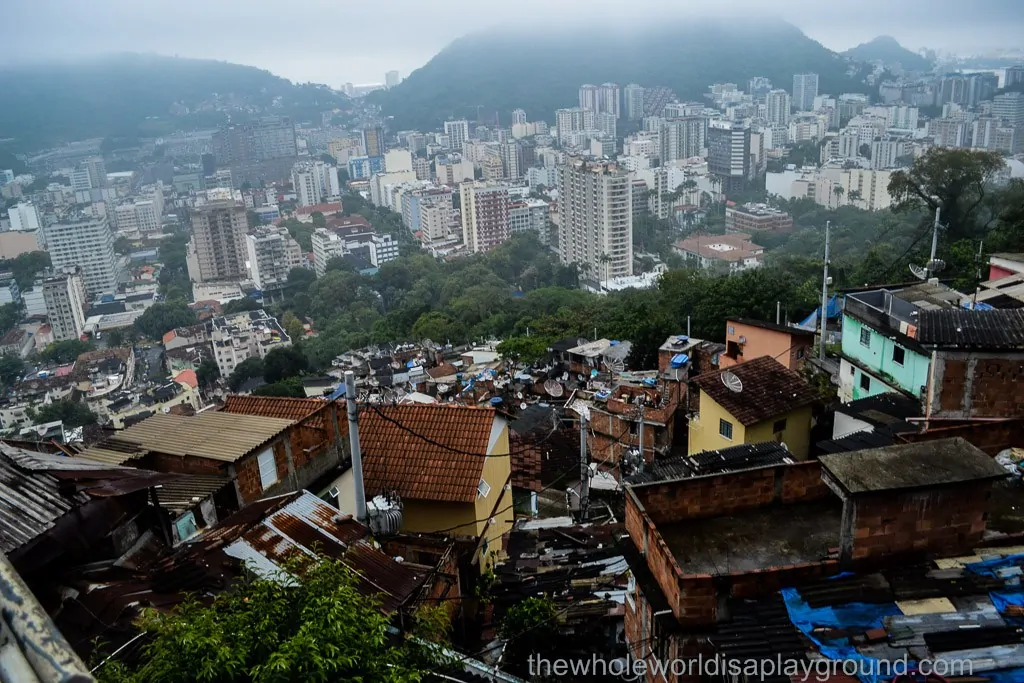
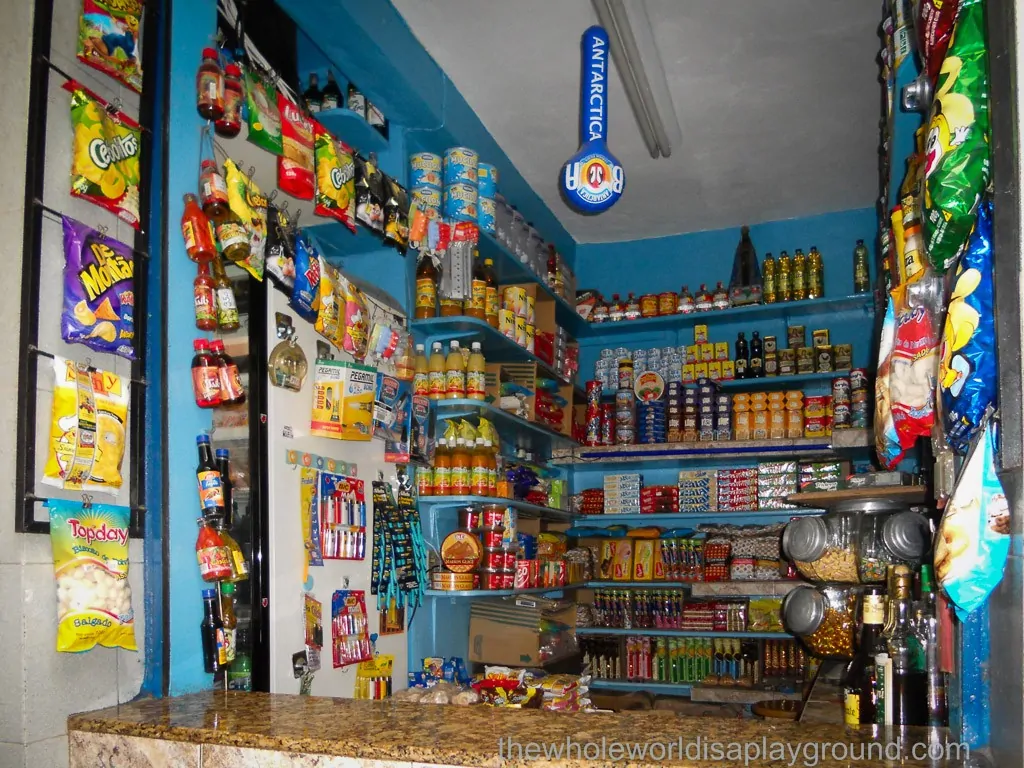
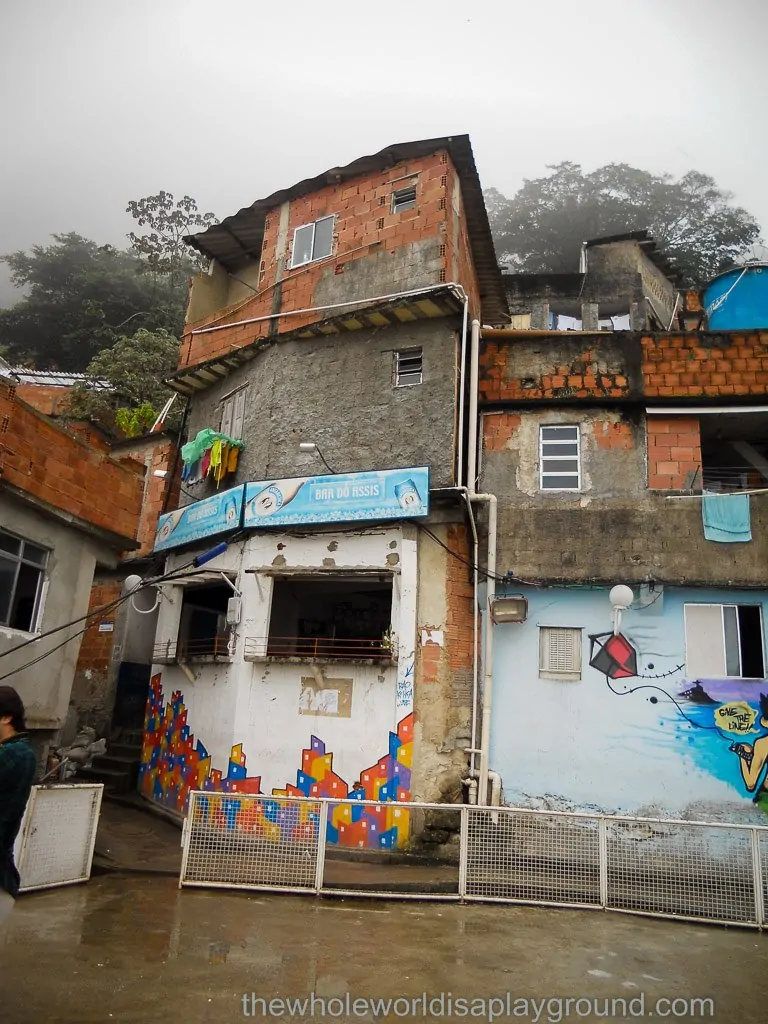
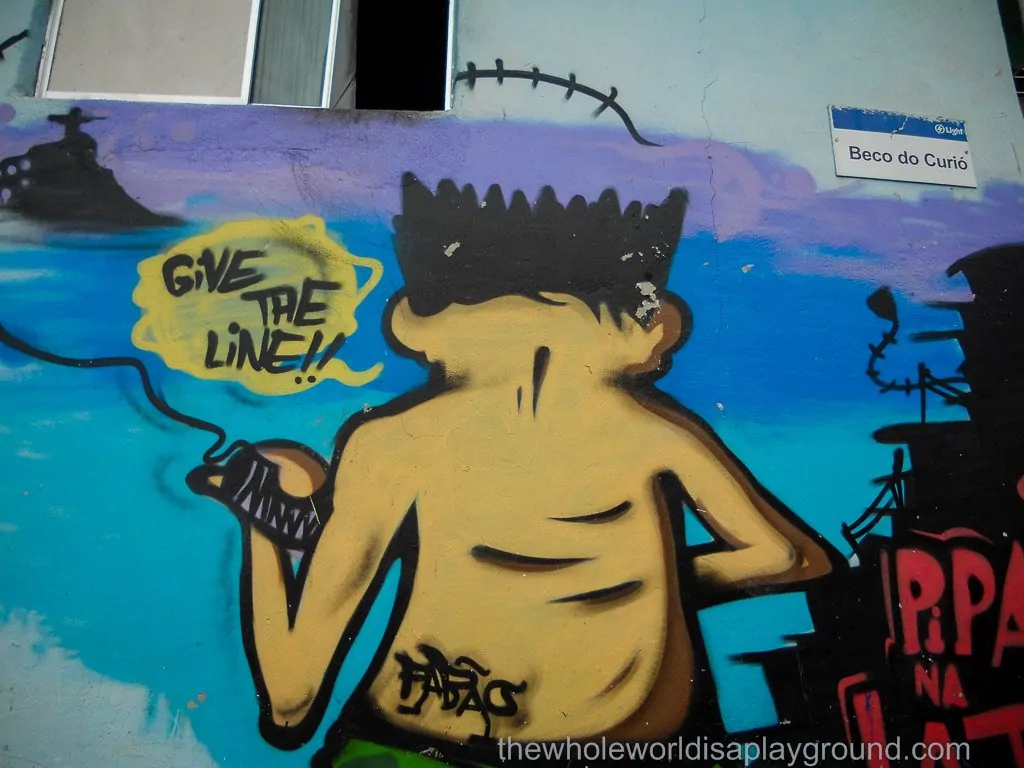
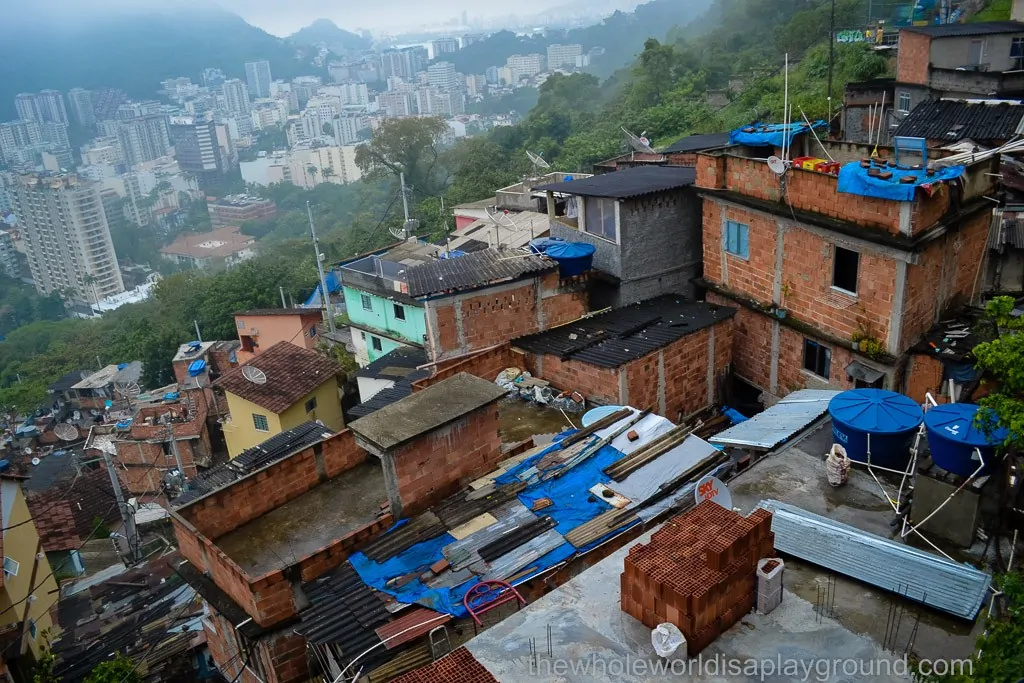
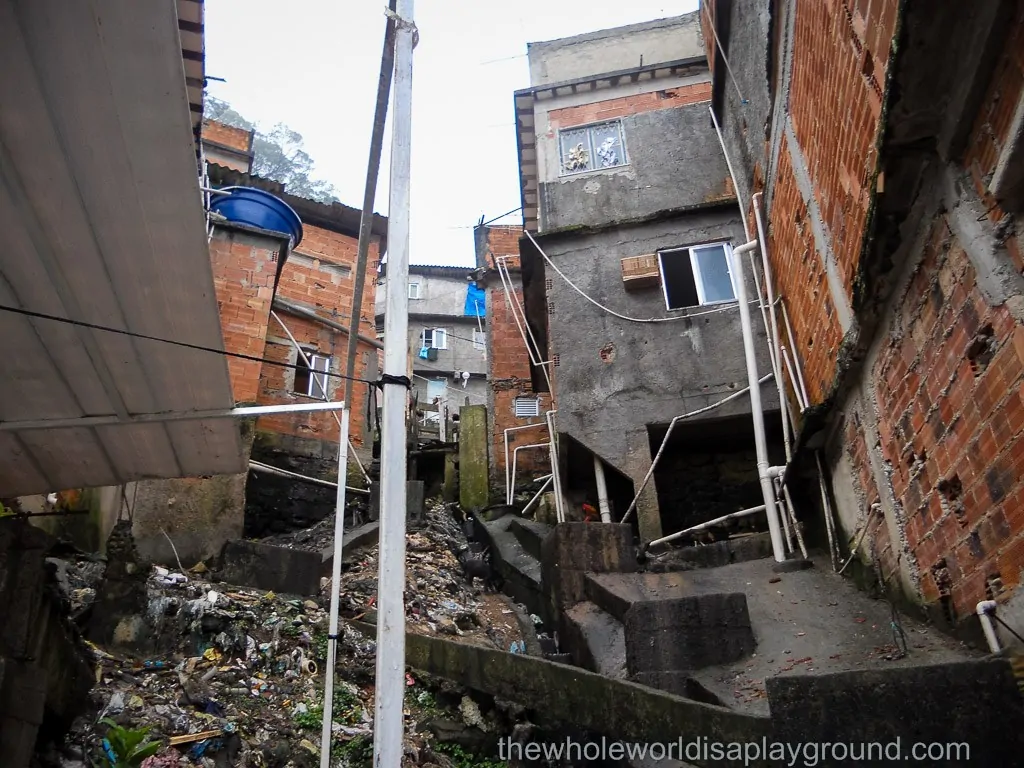
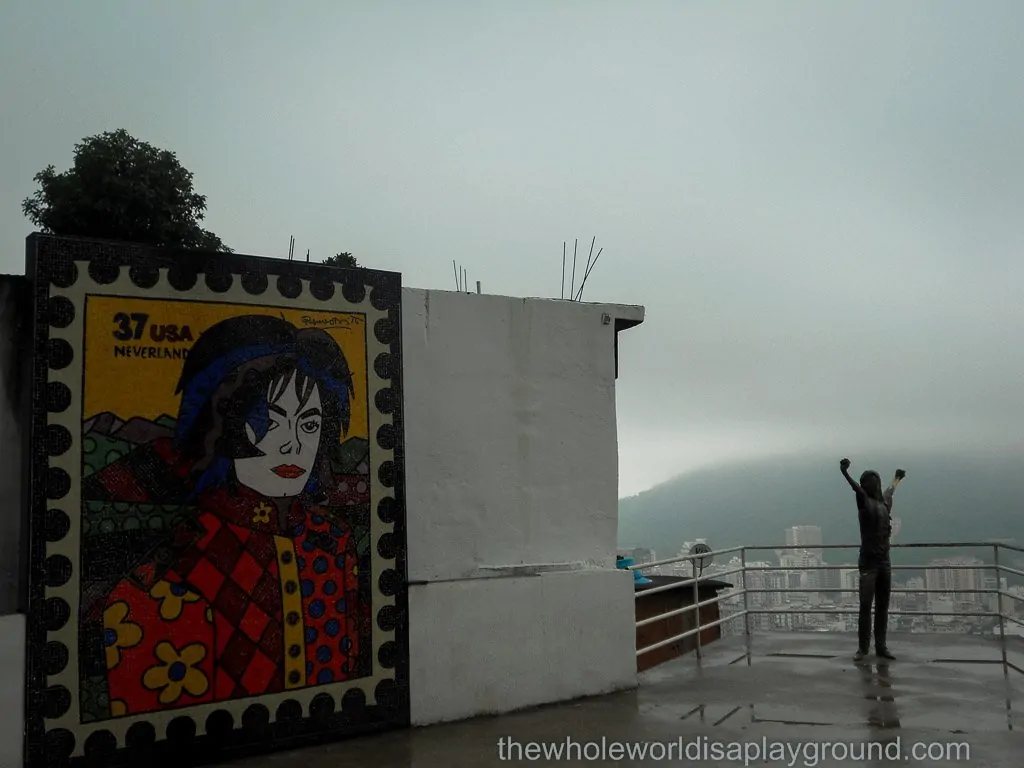
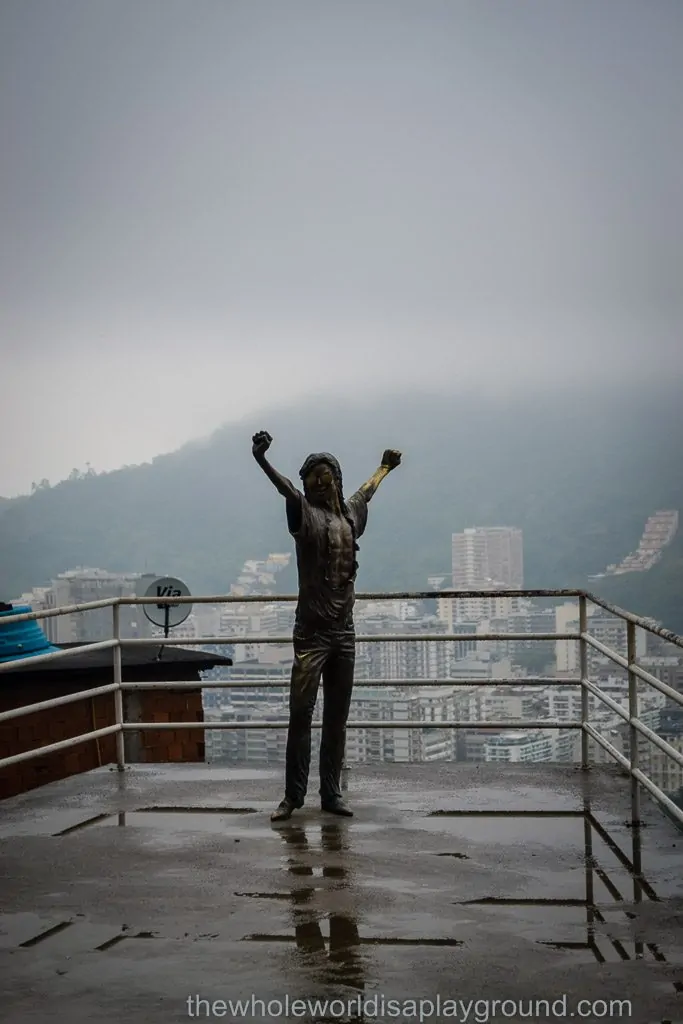
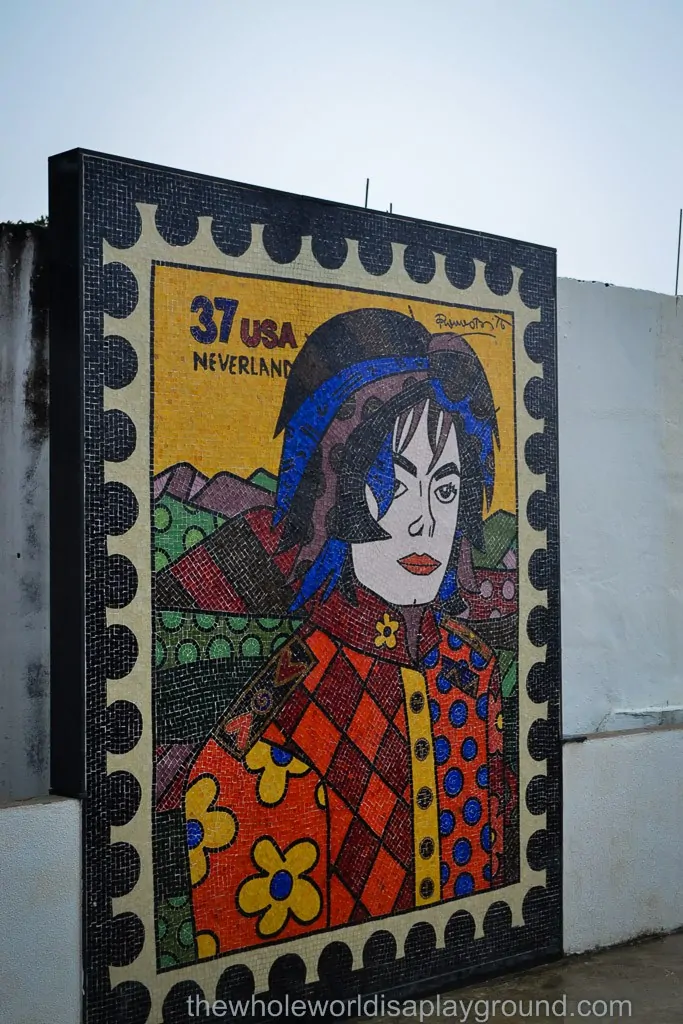
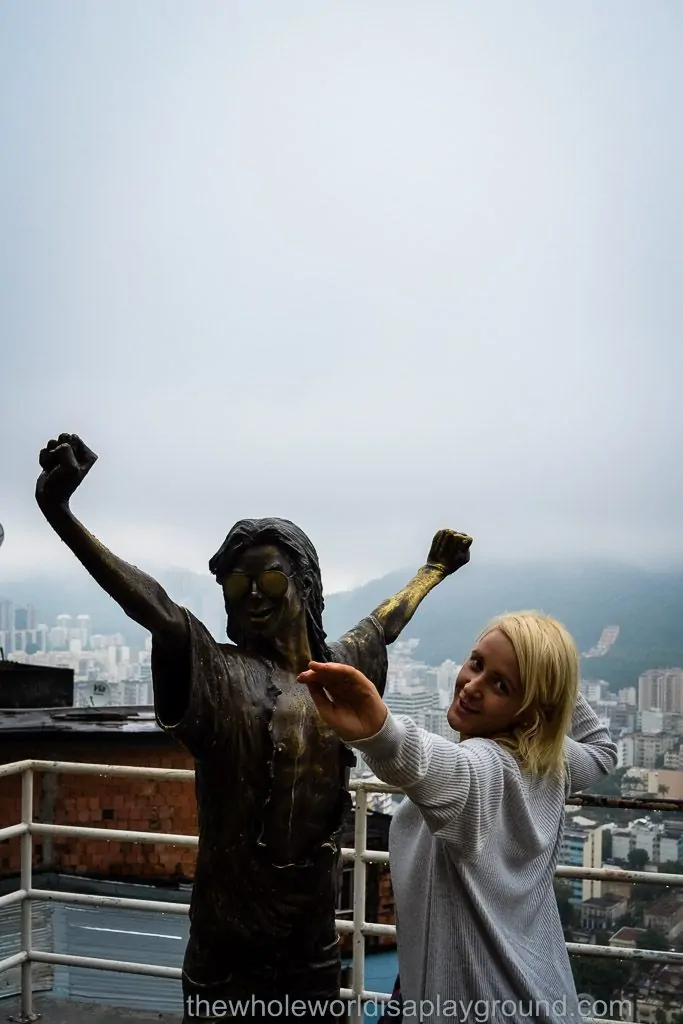
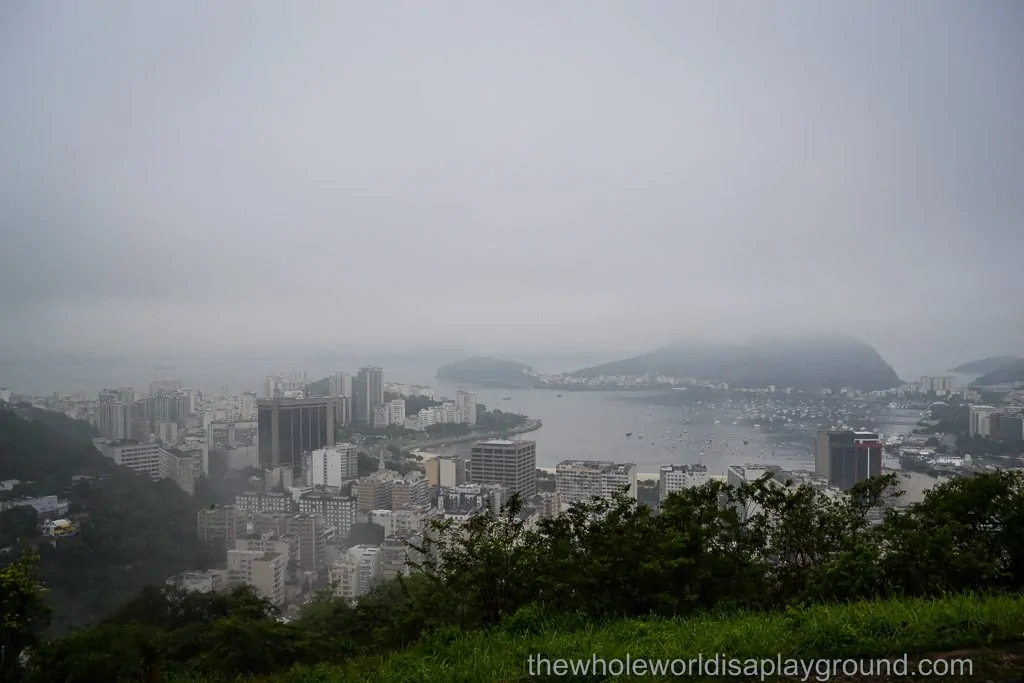
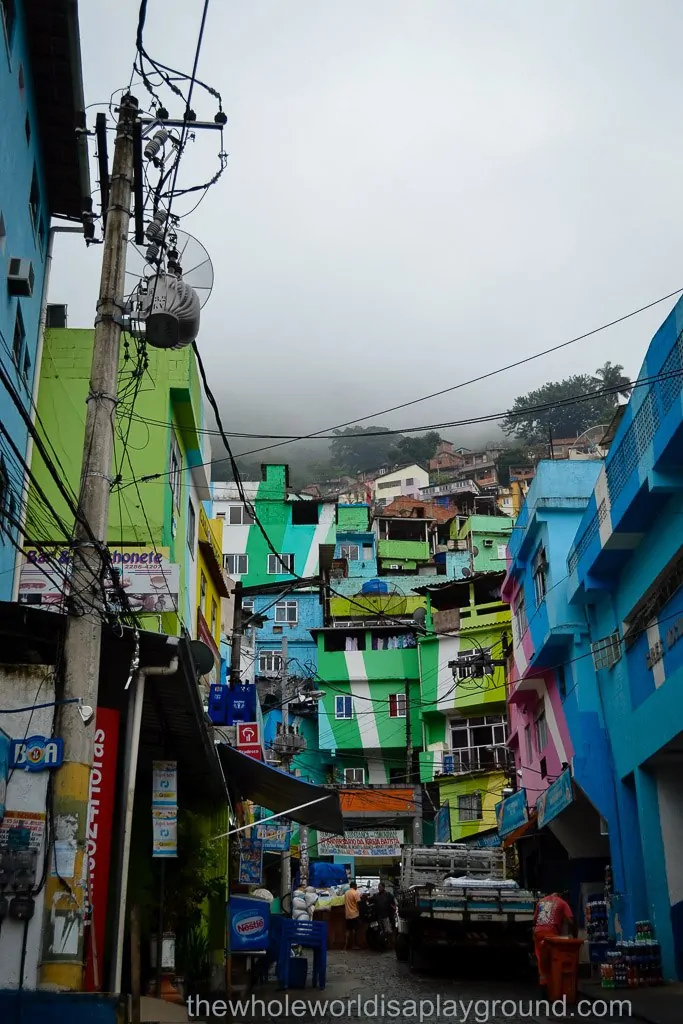
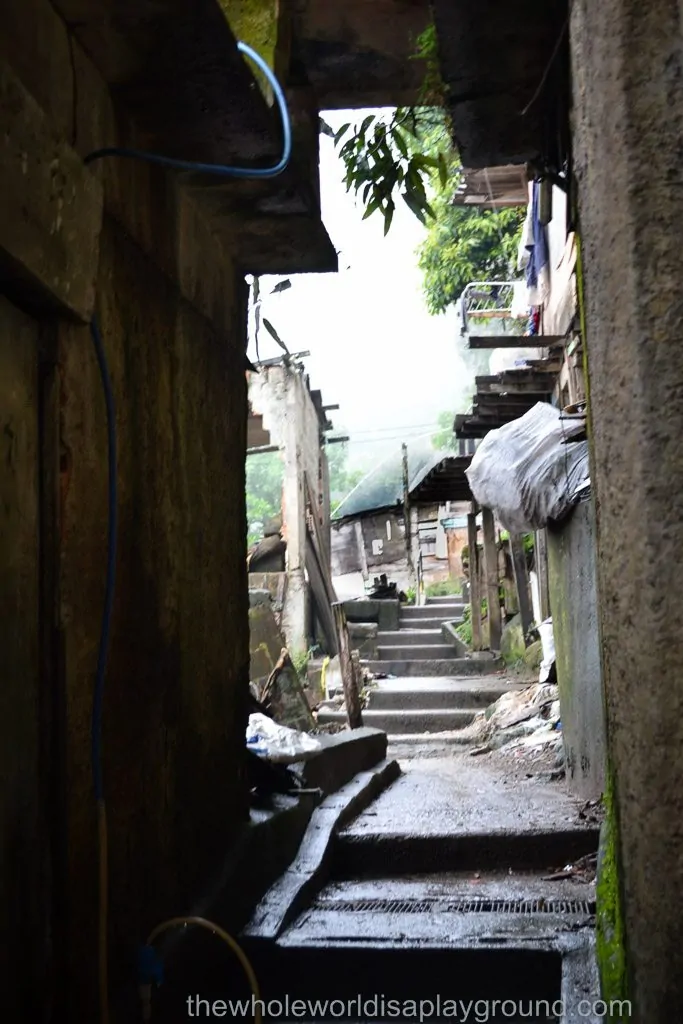
SUCH AN AMAZING EXPERIENCE
Enjoyed this article – thank you !!